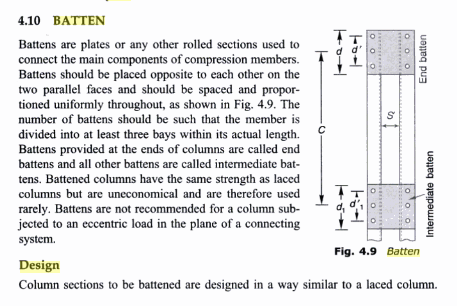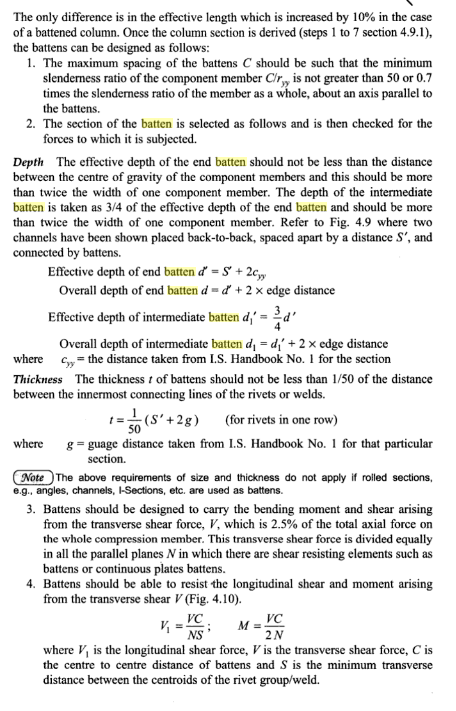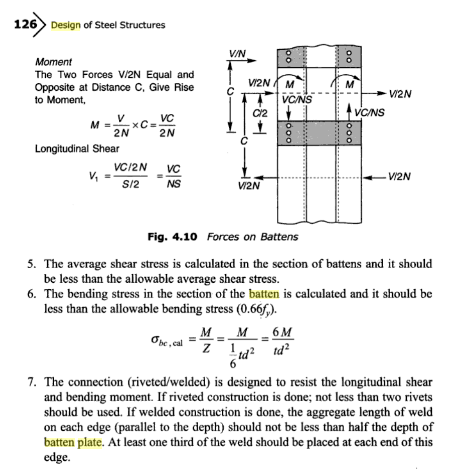Navigation
Install the app
How to install the app on iOS
Follow along with the video below to see how to install our site as a web app on your home screen.
Note: This feature may not be available in some browsers.
More options
-
Congratulations waross on being selected by the Tek-Tips community for having the most helpful posts in the forums last week. Way to Go!
You are using an out of date browser. It may not display this or other websites correctly.
You should upgrade or use an alternative browser.
You should upgrade or use an alternative browser.
Shear Buckling of a Plate w/ Only The Loaded Edges Support
- Thread starter brockjd
- Start date
- Status
- Not open for further replies.
That's a tough one:
1) Are you sure that the unloaded edges are really free? I'm having a hard time imagining how that would come about.
2) If your unloaded edges really are free, then you'll also have some bending in the plate which will make things... complicated.
I like to debate structural engineering theory -- a lot. If I challenge you on something, know that I'm doing so because I respect your opinion enough to either change it or adopt it.
1) Are you sure that the unloaded edges are really free? I'm having a hard time imagining how that would come about.
2) If your unloaded edges really are free, then you'll also have some bending in the plate which will make things... complicated.
I like to debate structural engineering theory -- a lot. If I challenge you on something, know that I'm doing so because I respect your opinion enough to either change it or adopt it.
- Thread starter
- #3
Brockjd:
I would use one pl. btwn. the two inner col. flgs., at their center lines. I would measure the distance btwn. the flgs. and cut the pls. 1/8" +/- smaller. This pl. would be on the order of the thickness of the exiting col. webs. Then, I would look at this as if my new pls. were a web of a built-up member, stitched to two flgs., which happen to be the existing col. sections. If these new pls. are 2' long and spaced 3' on center, do I have enough double sided fillet welds to make this built-up member work. It’s a funny pl. girder, right? You could add light t&b stiff. pls. to the free edges of your new web pls., stopping short of the dist. btwn. the inner flgs. Alternatively, you could use two pls. at each 3' space level. These pls. would span onto each existing flg. tip, abt. .25" - and leave enough flg. tip to allow them to be fillet welded to the flg. tips properly. The free edges could be stiffened with 2x2 angles with the horiz. leg pointing in. These angles would be a bit short of the dist. btwn. the inner flgs.
As for the analysis of these shear pls. (web pls.?), I’d look at Roark’s Formulas book, several of Timoshenko’s books or several other good Strength of Materials or Theory of Elasticity text books.
I would use one pl. btwn. the two inner col. flgs., at their center lines. I would measure the distance btwn. the flgs. and cut the pls. 1/8" +/- smaller. This pl. would be on the order of the thickness of the exiting col. webs. Then, I would look at this as if my new pls. were a web of a built-up member, stitched to two flgs., which happen to be the existing col. sections. If these new pls. are 2' long and spaced 3' on center, do I have enough double sided fillet welds to make this built-up member work. It’s a funny pl. girder, right? You could add light t&b stiff. pls. to the free edges of your new web pls., stopping short of the dist. btwn. the inner flgs. Alternatively, you could use two pls. at each 3' space level. These pls. would span onto each existing flg. tip, abt. .25" - and leave enough flg. tip to allow them to be fillet welded to the flg. tips properly. The free edges could be stiffened with 2x2 angles with the horiz. leg pointing in. These angles would be a bit short of the dist. btwn. the inner flgs.
As for the analysis of these shear pls. (web pls.?), I’d look at Roark’s Formulas book, several of Timoshenko’s books or several other good Strength of Materials or Theory of Elasticity text books.
brockjd said:I'm lacing together two columns that are about 16" apart
As I mentioned above, this will be a case where bending stress/buckling will be as, if not more important, than shear buckling. So, while I'm sadly unable to answer your specific theoretical question, we should certainly be able figure out something to allow design to proceed.
Most of the stuff that I've seen on battens and lacing has been prescriptive or semi prescriptive. The stuff below shows how they handle it in the Indian code. It strikes me as conceptually well thought out.



I like to debate structural engineering theory -- a lot. If I challenge you on something, know that I'm doing so because I respect your opinion enough to either change it or adopt it.
- Status
- Not open for further replies.
Similar threads
- Locked
- Question
- Replies
- 4
- Views
- 18
- Question
- Replies
- 8
- Views
- 39
- Question
- Replies
- 1
- Views
- 19
- Locked
- Question
- Replies
- 5
- Views
- 23
- Locked
- Question
- Replies
- 3
- Views
- 4
